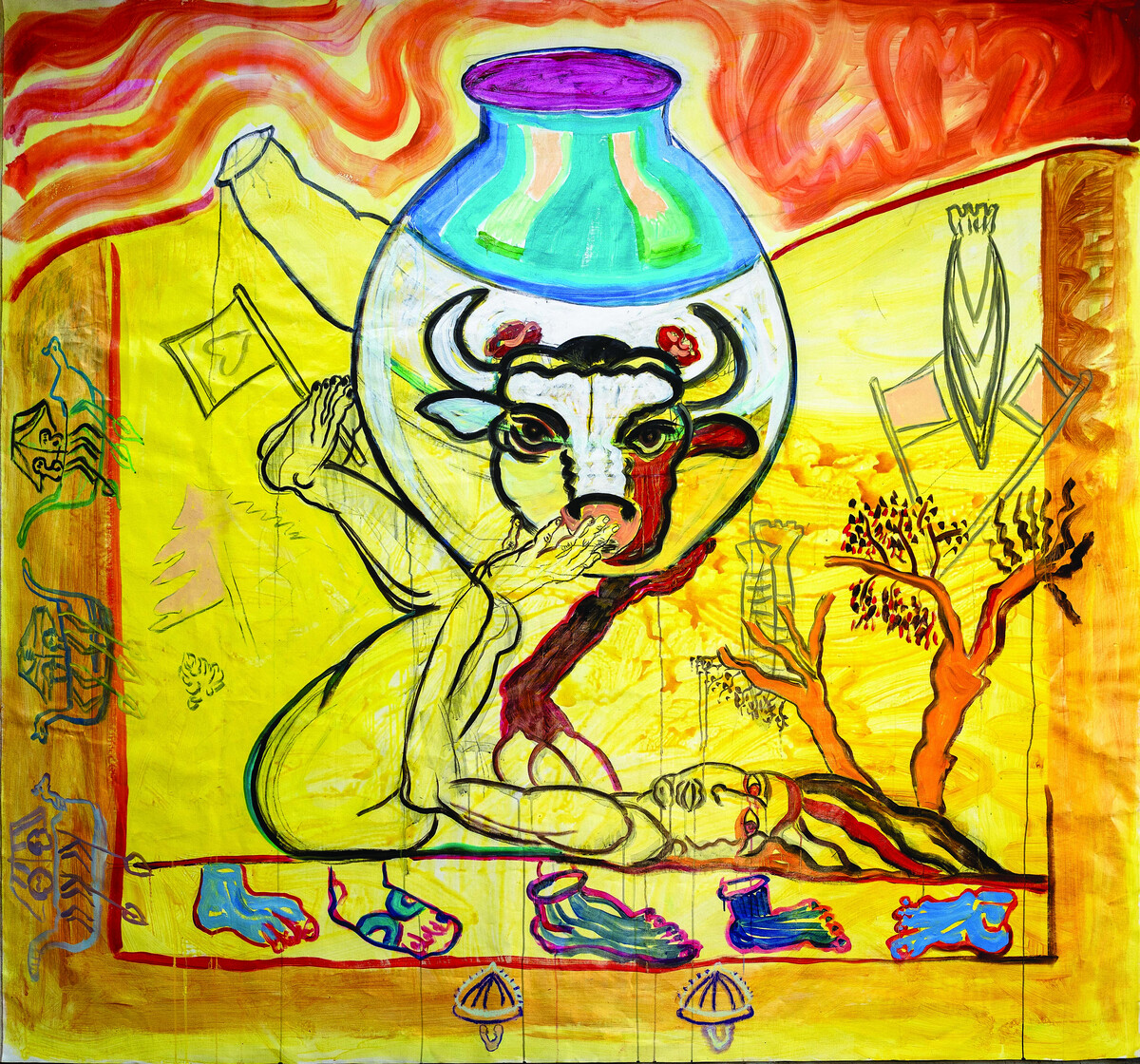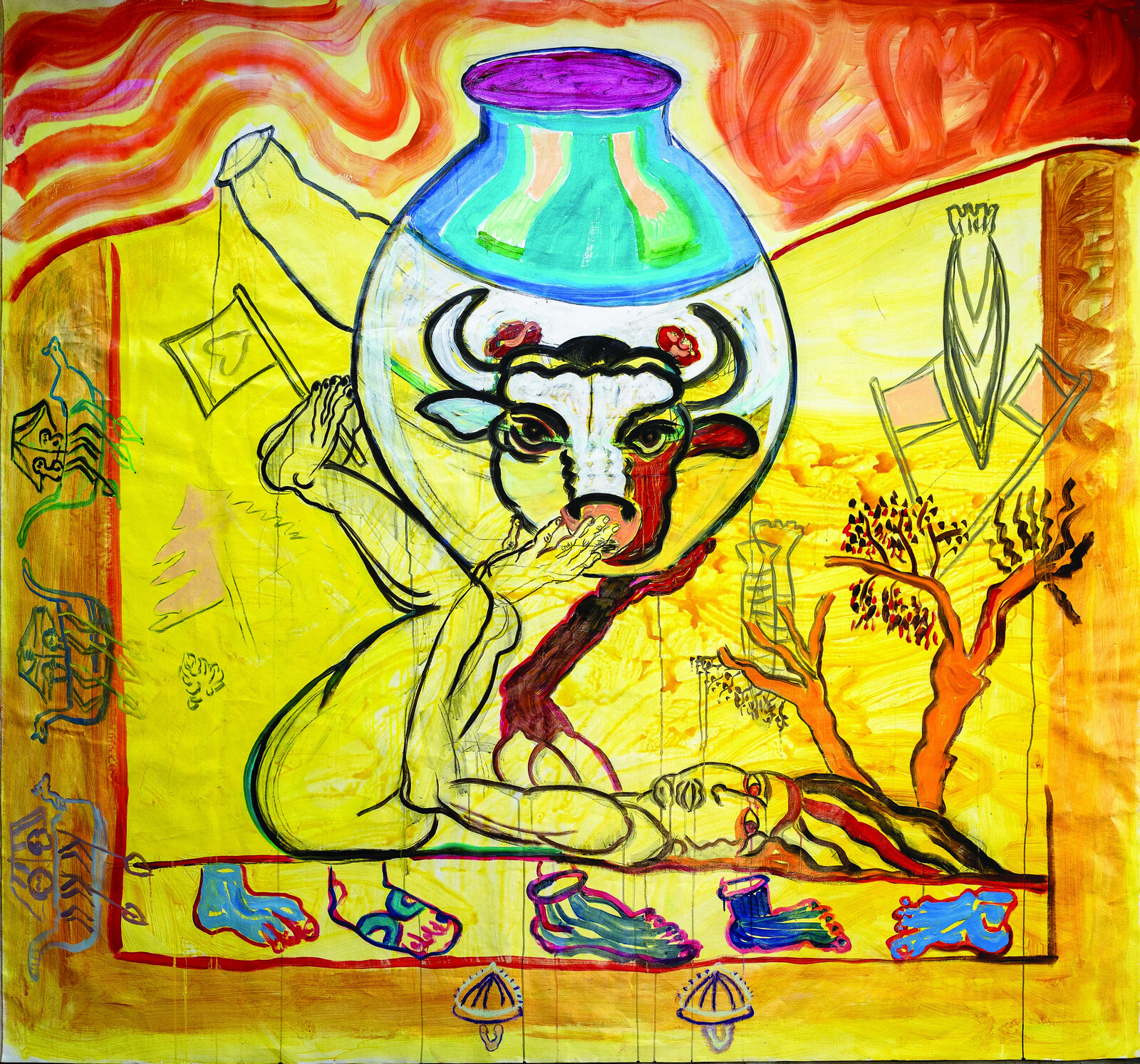A Dance with her Myth
April 20–November 24, 2024
Arsenale, Artiglieri building Campo della Tana 2169/F, Castello
30122 Venice
Italy
Hours: Monday–Friday 10am–7pm
The Pavilion of Lebanon will present A Dance with her Myth, an exhibition by Mounira Al Solh and curated by Nada Ghandour, for the 60th International Art Exhibition of the Venice Biennale. Situated in the Arsenale, Mounira Al Solh’s 180m2 multimedia installation, composed of 41 pieces—drawings, paintings, sculptures, embroideries, and video— creates a bridge between myth and reality, revisiting the rapt of Europa to offer a new perspective on the aspirations and challenges faced by women today. On canvas, paper and screen, the artist’s creative process combines allegorical narrative with a documentary approach, appropriation with diversion, and gives realistic, poetic, and very contemporary representations.
All peoples inherit foundational stories, including the Lebanese, whose myths date back to the Phoenicians. The history of the Phoenicians, who invented the alphabet, is little known. Nevertheless, cities such as Byblos, Beirut, Saida and Tyre attest to a glorious past; Phoenicia is part of the history of the great powers, namely Alexander the Great’s Greece and the Roman Empire, that would subsequently dominate it. Famous Phoenician myths, including the abduction of Europa, have entered Greco-Roman mythology. Al Solh’s installation pays tribute to this rich multimillennial and still thriving cultural heritage and uses the myth of the rapt of Europa to express the fate of women and their capacity for resilience.
Over the centuries, the interpretation of myths has been used both in dissent and in subversion: these dimensions are present in the installation.
In the ancient narrative, on a beach in Tyre, Zeus takes the form of a white bull to seduce the Phoenician princess Europa and, through a ruse, carries her to the shores of Crete, where he marries her. In her installation, the artist matches the present with the myth in an unexpected way and suggests an alternative, even inverted, reading of it, which allows critical distance and humor. The search for Europa, which the artist invites us to participate in, contributes to the fulfillment of a female destiny free from “gods”—that is, assuming, without being subjected to it, the role and responsibility of men, and wishing for equality.
Written by men throughout centuries, the narrative first expressed the desire for domination of women and later the abduction was portrayed as consent. Al Solh reinterprets the myth through the perspective of a contemporary woman, promoting a relationship based on gender balance, pushing the deconstruction of sexual stereotypes to the extreme.
A Dance with her Myth is set up around a boat, inviting visitors on a symbolic journey of emancipation. Its unfinished structure indicates that the journey is not fully completed. The itinerary of the installation is rooted in a power play. In the center, the skiff is located half-way between the paintings and the graphic works that advocate the questioning of gender norms and the struggle for equality, and the masks embodying the conservative forces of society. The objects present in the space also feature in the 12-minute film projected on the boat’s sail-screen.
Mounira Al Solh’s drawings constitute the narrative of the central pattern developed in the paintings, which defy traditional iconography. Transposition, deviation, and distortion are the tools used in the artist’s strategy. Various archetypical figures of Phoenician culture or of mythology populate, in an explosive and at times comical way, an intermediary world between allegory and reality. The temporality of A Dance with her Myth is that of the artist in dialogue with the viewer, here and now.
The scenography, designed by the architect Karim Bekdache, with no reorganization or partitioning of the space, allows a total immersion in the display. It contributes to a progression towards an endless horizon painted in blue grey—the color of the sea and the skies of Tyre—as well as the long, winding pontoon that crosses the Pavilion from side to side, and creates the link between land and sea. The encounter between the works and the visitor occurs throughout the visit.




